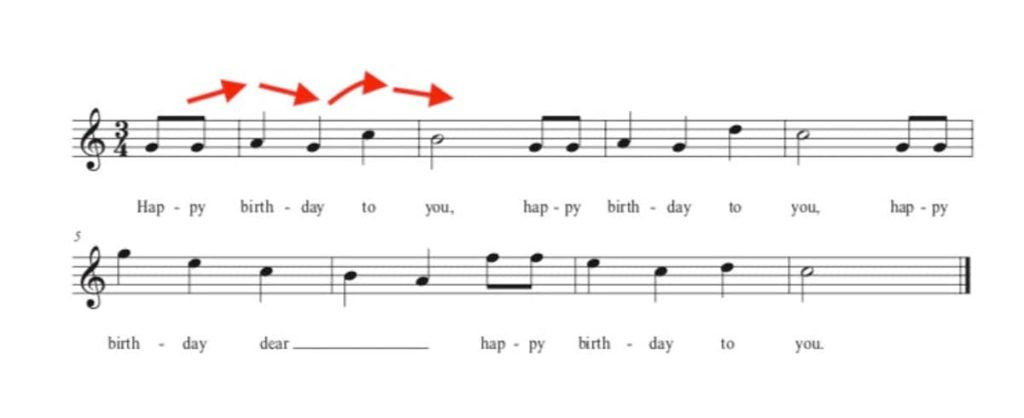You know that feeling when you’re belting out a song with friends at karaoke and it just feels… right? Recently, I experienced that rush singing “Shallow” at a karaoke night, which took me back to my days as a music teacher in Kentucky. I taught my students all sorts of songs, from the national anthem to spontaneous renditions of “Happy Birthday” for classroom celebrations.
It struck me then, and still does now, that some of the most familiar songs, the ones we think we know inside and out, are actually surprisingly difficult to sing well. Why is that? Why do we struggle with tunes like the “Happy Birthday Song” and the “Star-Spangled Banner” when we’ve heard and sung them countless times?
The Happy Birthday Club: Unraveling Singing Challenges
As a professor, choir director, and researcher at Penn State University, I’ve dedicated myself to exploring this very question. Along with my colleagues in what we jokingly call the “Happy Birthday Club,” we’re diving into the science of singing, investigating what makes a song easy or hard to perform, and what conditions help people sing their best.
Our initial research suggests that focusing too much on perfect pitch can actually hinder the idea that everyone can sing. It creates the misconception that singing is only for the exceptionally talented. This is problematic, especially because self-belief, or how you perceive your own abilities, significantly impacts participation in the arts. Furthermore, our preliminary findings indicate that judging singing ability based on tricky tunes like “Happy Birthday” is misleading.
 Ciara Newman, a Penn State music student, sings “Happy Birthday.”
Ciara Newman, a Penn State music student, sings “Happy Birthday.”
Image: Ciara Newman, a Penn State music student, demonstrating the Happy Birthday song for vocal analysis.
In collaboration with Peter Pfordresher from the University at Buffalo, we analyzed data from college students singing “Happy Birthday.” Interestingly, regardless of whether students started the song in a high or low vocal range, many stumbled at the same point: the ascending leap in the third “happy birthday.”
This leap is the core reason why this seemingly simple, universal song is vocally challenging for people worldwide. The third “happy birthday” contains an octave leap – a jump of seven notes up the musical scale. This interval can be difficult to manage, particularly if you’ve started the song too high and already reached the upper limits of your comfortable vocal range. It’s a fun fact that “Happy Birthday” actually originated in Kentucky in the 1890s as a much simpler tune called “Good Morning to All.”
 Ciara Newman, a Penn State music student, sings “Happy Birthday.”
Ciara Newman, a Penn State music student, sings “Happy Birthday.”
Image: Musical notation highlighting the challenging octave leap in the “Happy Birthday” song, indicating the highest and most difficult note for many singers.
Another song notorious for its vocal difficulty is the “Star-Spangled Banner.” Most people in America are familiar with it and have likely sung it. You might recall Demi Lovato’s Super Bowl performance earlier this month, where she sang it beautifully in A-flat, a common key. Last year, Gladys Knight also delivered a stunning rendition at the Super Bowl, singing it in a lower key that seemed perfectly suited to her voice.
Regardless of the key, similar to “Happy Birthday,” the national anthem presents significant vocal challenges. Its wide vocal range demands singers to navigate both high and low notes, and everything in between. It includes small intervals, notes close together on the scale, but also large upward leaps – sometimes several in quick succession, like the fourth, fifth, and sixth notes. Starting the song too high can quickly make hitting all the notes perfectly an impossible task.
 Ciara Newman, a Penn State music student, sings “Happy Birthday.”
Ciara Newman, a Penn State music student, sings “Happy Birthday.”
Image: Musical notation comparing the smaller intervals in “Happy Birthday” to the larger leaps in the “Star-Spangled Banner,” illustrating why the national anthem is often considered more difficult to sing.
The Social Dynamics of Singing “Happy Birthday”
In a recent lab meeting, a research assistant posed an intriguing question: “What if we often sing ‘Happy Birthday’ incorrectly because we’re so used to hearing it sung poorly?”
We’re still investigating whether learning songs incorrectly from the start contributes to their perceived difficulty. Adding to this complexity, research indicates that some children sing better alone, while others perform better in groups. This suggests that singing a song like “Happy Birthday,” seemingly simple on the surface, is actually a multifaceted task influenced by various factors, including your chosen vocal range and whether you or someone else selects the starting pitch.
Interestingly, people often underestimate their own singing abilities. In one study, children categorized into a “poor singer” group were found to be quite pitch-accurate once researchers identified their optimal vocal range and evaluated their solo singing. For adults unsure of their singing prowess, you’re likely more capable than you think. Amusia, the inability to perceive pitch changes, is rare. Chances are, you don’t have it.
Finding Your Voice: Songs That Suit You
Reflecting on my karaoke experience, I chose “Shallow” because I felt confident Bradley Cooper’s part aligned with my vocal range (yes, I practiced at home first!).
So, here’s some advice from the Happy Birthday Club researchers: Don’t judge your singing talent based on culturally ubiquitous songs like “Happy Birthday” or the national anthem. They simply aren’t accurate measures of your singing potential. Instead, focus on songs and artists you enjoy, and explore music that comfortably fits your vocal range. When the range is right for you, singing becomes more enjoyable and effortless.
Many pop songs are written within a limited vocal range, making them an excellent starting point. Experiment to find the notes where your voice feels most comfortable and give those songs a try, whether at home or your next karaoke night.
This article is republished from The Conversation under a Creative Commons license. Read the original article.
